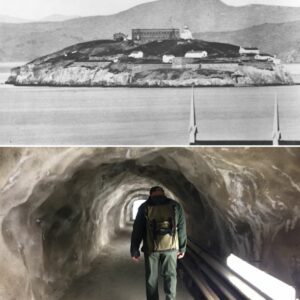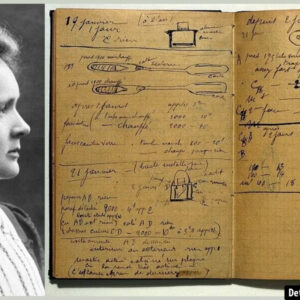Imagine the sight of a dog pulling a cart filled with fresh milk, trotting down narrow streets in small European towns. In the early 20th century, this charming tradition was a common way to bring milk from rural dairies to city homes. Dogs, known for their strength and agility, became integral to daily life, offering more than just a delivery service—they symbolized a simpler, more connected way of living. As modern technology took over, the dog-drawn cart gradually faded, leaving behind only rare photographs that capture its once-ubiquitous presence.
The Rise of Dog-Drawn Carts in Europe
The idea of using dogs to pull carts can be traced back to the early Victorian era, when the practical and efficient nature of these animals was recognized. Dogs, known for their strength and agility, were harnessed to pull carts for transporting various goods, with milk being one of the most common items. In the Netherlands and Belgium, particularly, this method of delivery became widespread. The carts were small, light, and easily maneuverable, making them ideal for navigating narrow, often crowded streets.

At the time, there were no modern conveniences such as refrigerated trucks or widespread motorized delivery systems. The use of dog-drawn carts provided a simple and effective solution for delivering fresh milk to urban centers from the rural dairies. For many, this method was not only practical but also had a certain charm, as it represented a direct connection to the land and the animals that played such a vital role in their daily lives.
Video
Watch the video showing the sad fate of Dutch cart-pulling dogs around 1920, in stunning color.
Challenges and Prohibitions: London’s Ban on Dog-Carts

Despite the practicality of dog-drawn carts, there were significant challenges. In London, for instance, the carts were eventually deemed a nuisance, especially when used in busy pedestrian areas. In 1840, due to concerns about animal welfare and public safety, the city implemented a ban on the use of dog-drawn carts. Animal rights activists argued that the dogs were often overworked, subjected to harsh conditions, and at risk of injury. There were also fears that these animals could become more susceptible to diseases like rabies, which were prevalent at the time.
The ban on dog-carts was part of a broader movement to address the issue of animal cruelty, which led to the creation of more regulations and protections for working animals. However, the law did not extinguish the tradition entirely, as it continued to thrive in other parts of Europe, particularly in rural areas where the use of animal power was still a necessity.
The Survival of Dog-Drawn Carts in France and Belgium

In contrast to the ban in London, dog-drawn carts continued to be a familiar sight in the more rural parts of France and Belgium. In these countries, the practice was not just a means of milk delivery; it was also a charming and nostalgic part of everyday life. Belgian and French locals still recall the image of farmers or milk sellers with their faithful dogs pulling carts loaded with fresh milk churns as they made their way through villages and into the towns.
In the early 20th century, a Dutch traveler named Pieter van der Meer recalled his encounters with this quaint tradition. As he described, it was a picturesque custom that was gradually fading as modern transportation methods began to take over. Yet, even by the early 1900s, the image of the dog-drawn cart remained an iconic part of rural life, particularly in the outskirts of Belgian towns.

Dog-Drawn Carts in Wartime: A Role in Military Logistics

The utility of dogs extended far beyond the realms of milk delivery. During both World War I and World War II, these strong and reliable animals were enlisted to perform crucial tasks in the military. In World War I, dogs were harnessed to pull small field guns, helping to move artillery through difficult terrains. This use continued into World War II, where the Soviet army made use of dog-drawn carts to transport wounded soldiers on stretchers, saving countless lives during the chaotic and brutal conflict.
These wartime roles demonstrated the remarkable versatility of dogs as working animals. From delivering milk to serving on the battlefield, dogs proved to be invaluable companions to humans, displaying a resilience and strength that is often underappreciated.
The Decline of Dog-Drawn Carts: A Farewell to a Bygone Era

As the 20th century progressed, the use of dog-drawn carts began to fade. The advent of motorized vehicles, refrigeration, and more efficient delivery systems made the practice obsolete. The transition to modern transportation methods meant that the quaint tradition of dog-drawn carts could no longer compete with the speed and efficiency of trucks and cars.
By the early 20th century, dog-drawn milk carts had become a rare sight. The change was not instantaneous, but it marked the end of an era. The practice, once common in rural areas and small towns, gradually disappeared as new technologies took over. The few remaining carts were relegated to history, and the dog-drawn cart became a nostalgic memory for those who had witnessed its once-ubiquitous presence.
Vintage Photographs: A Glimpse into the Past
Despite the decline of the dog-drawn cart, vintage photographs have preserved this charming aspect of early 20th-century life. These images capture the simplicity and charm of a time when life moved at a slower pace, and the bond between humans and animals was evident in everyday tasks. The photographs are a valuable window into the past, showing how communities relied on animals for both practical and emotional support.
One such photo from around 1910 shows a milkman pouring fresh milk from a cart into a pitcher, highlighting the hands-on nature of the work. Other images show milk sellers in Brussels, Belgium, as they navigate the streets with their dogs pulling carts loaded with milk. These rare photos serve as a reminder of a time when milk delivery was a personal, intimate service, and dogs played an essential role in the daily life of communities.
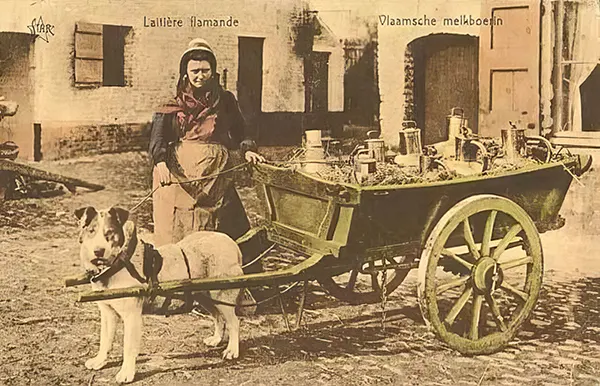
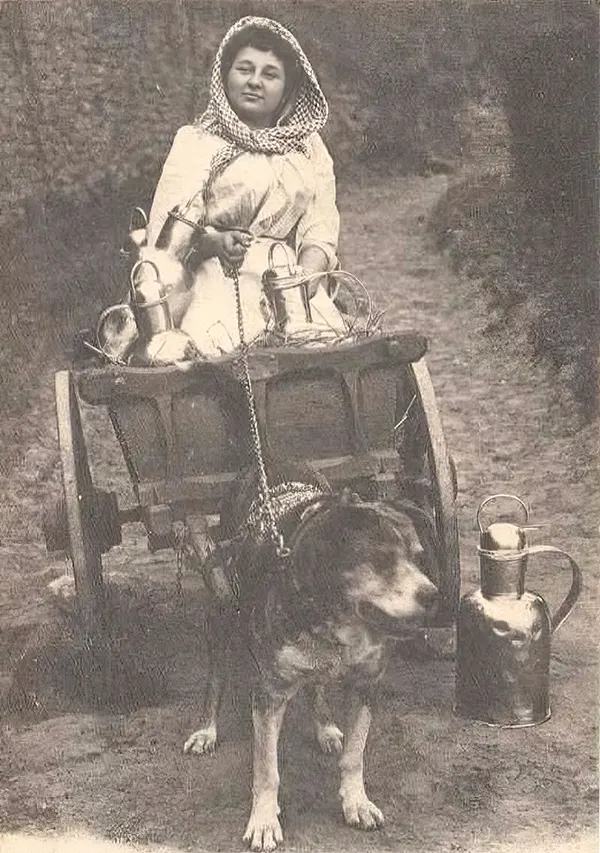
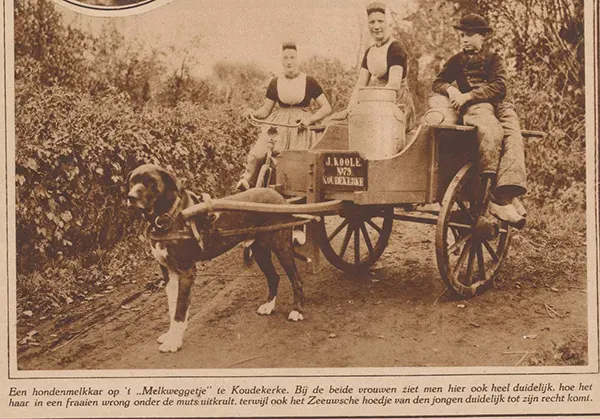
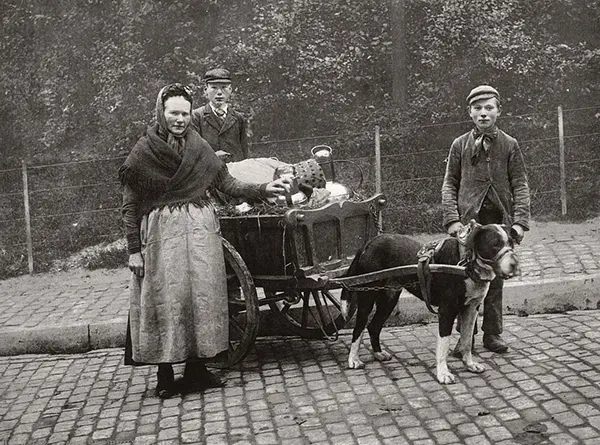
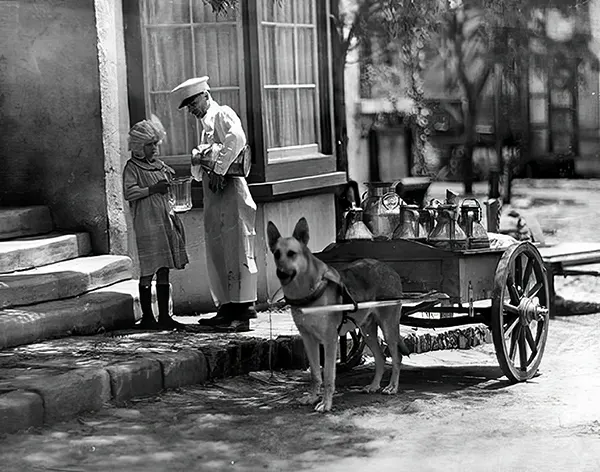
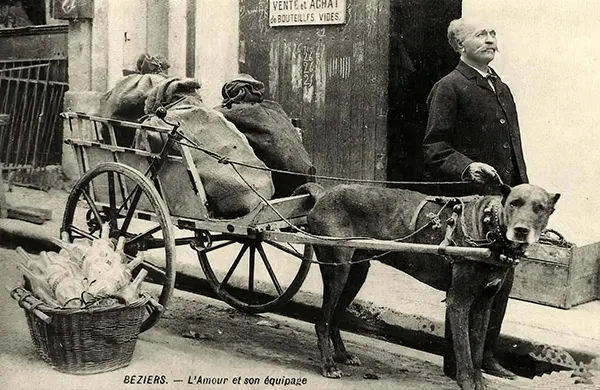
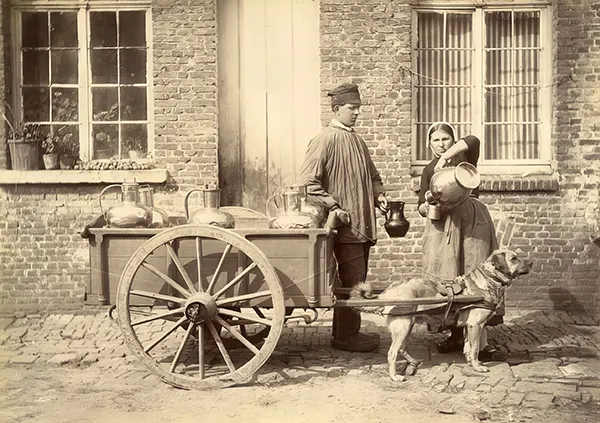
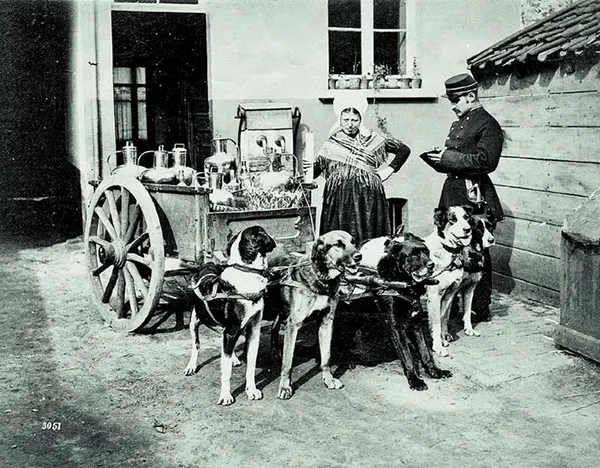
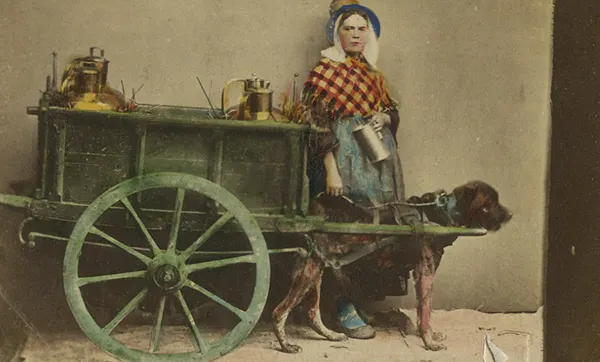
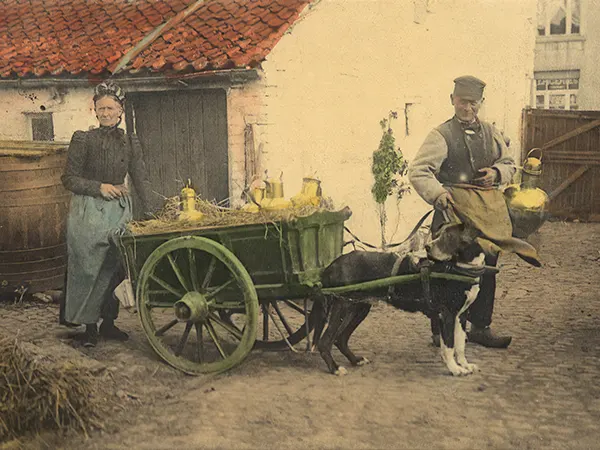
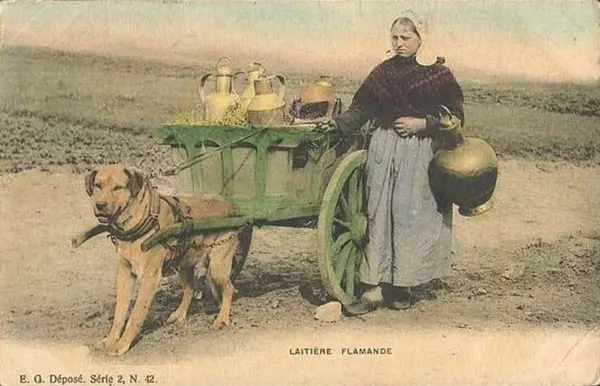
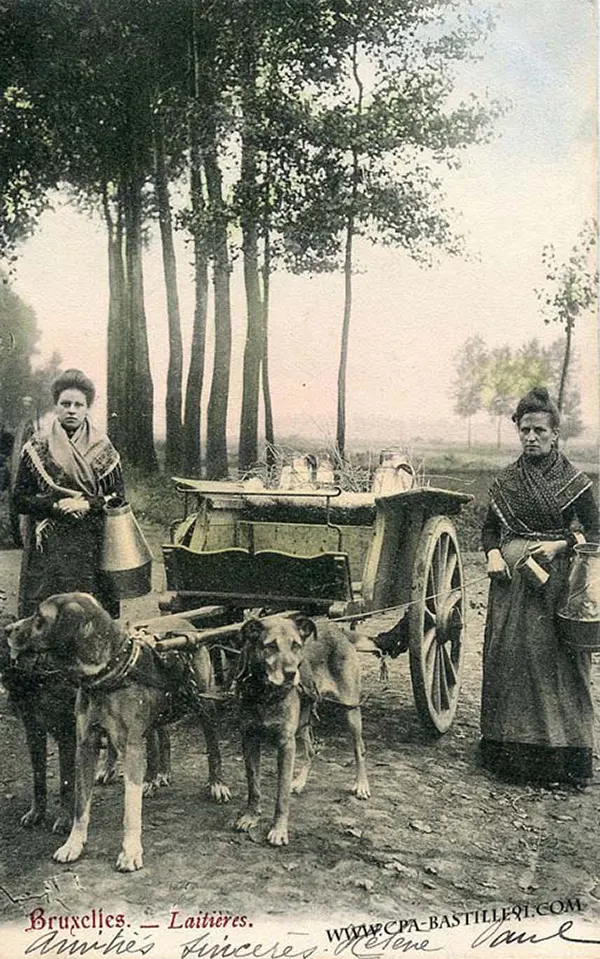
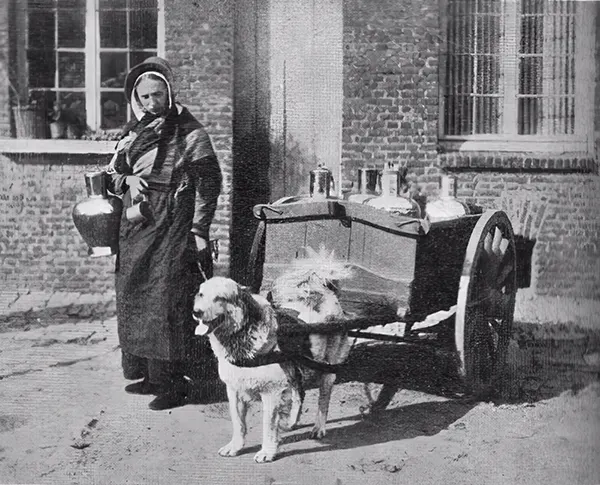

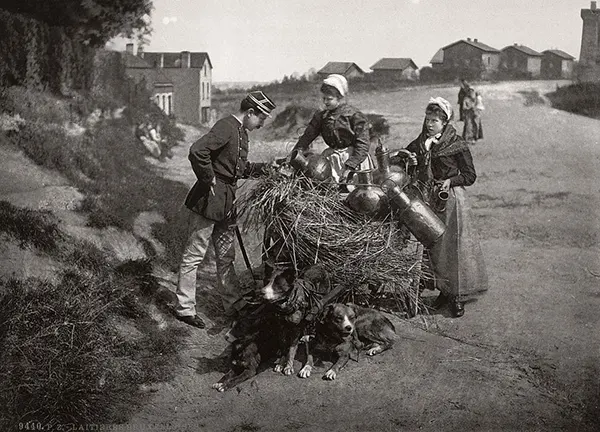
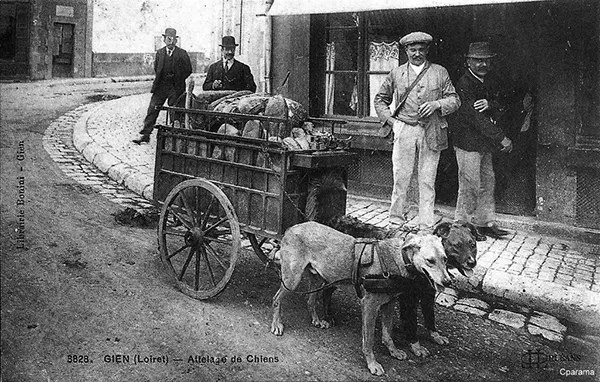

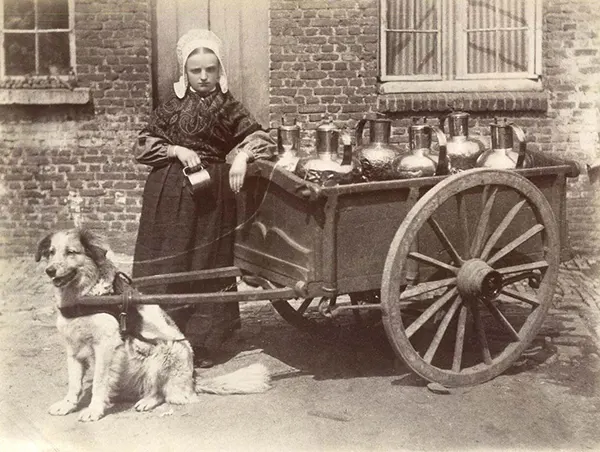

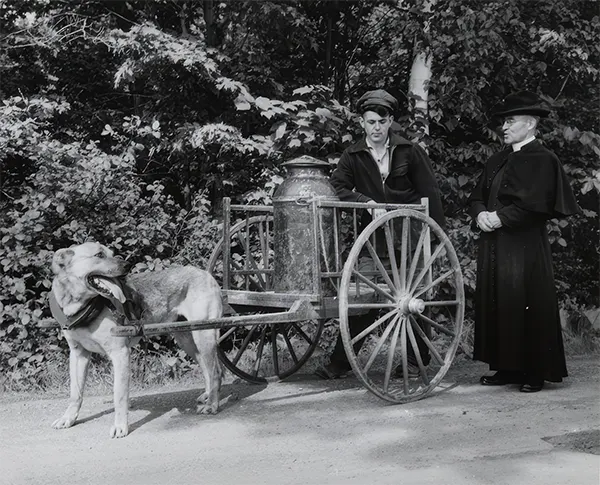
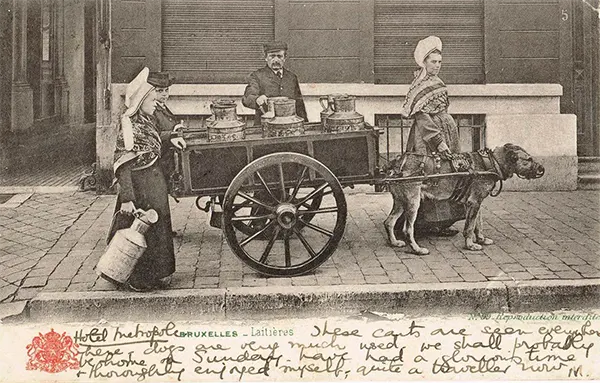
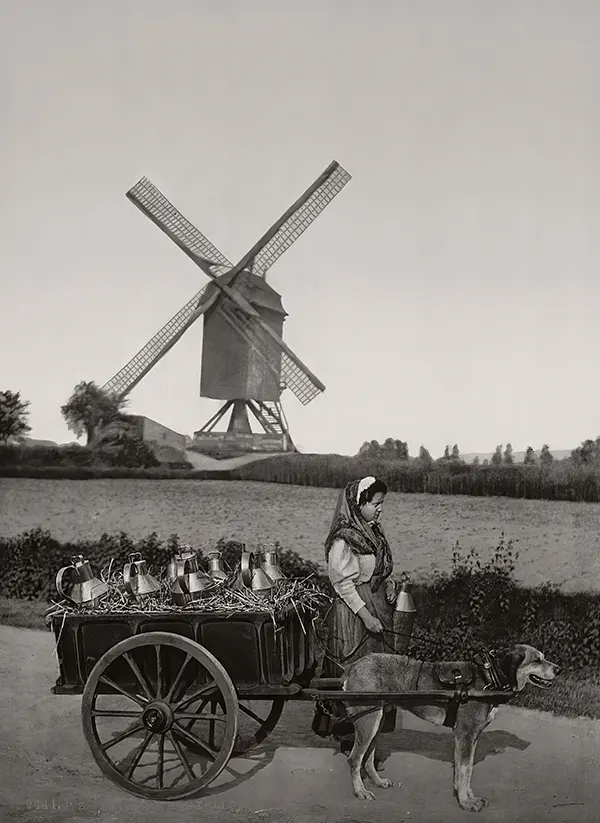
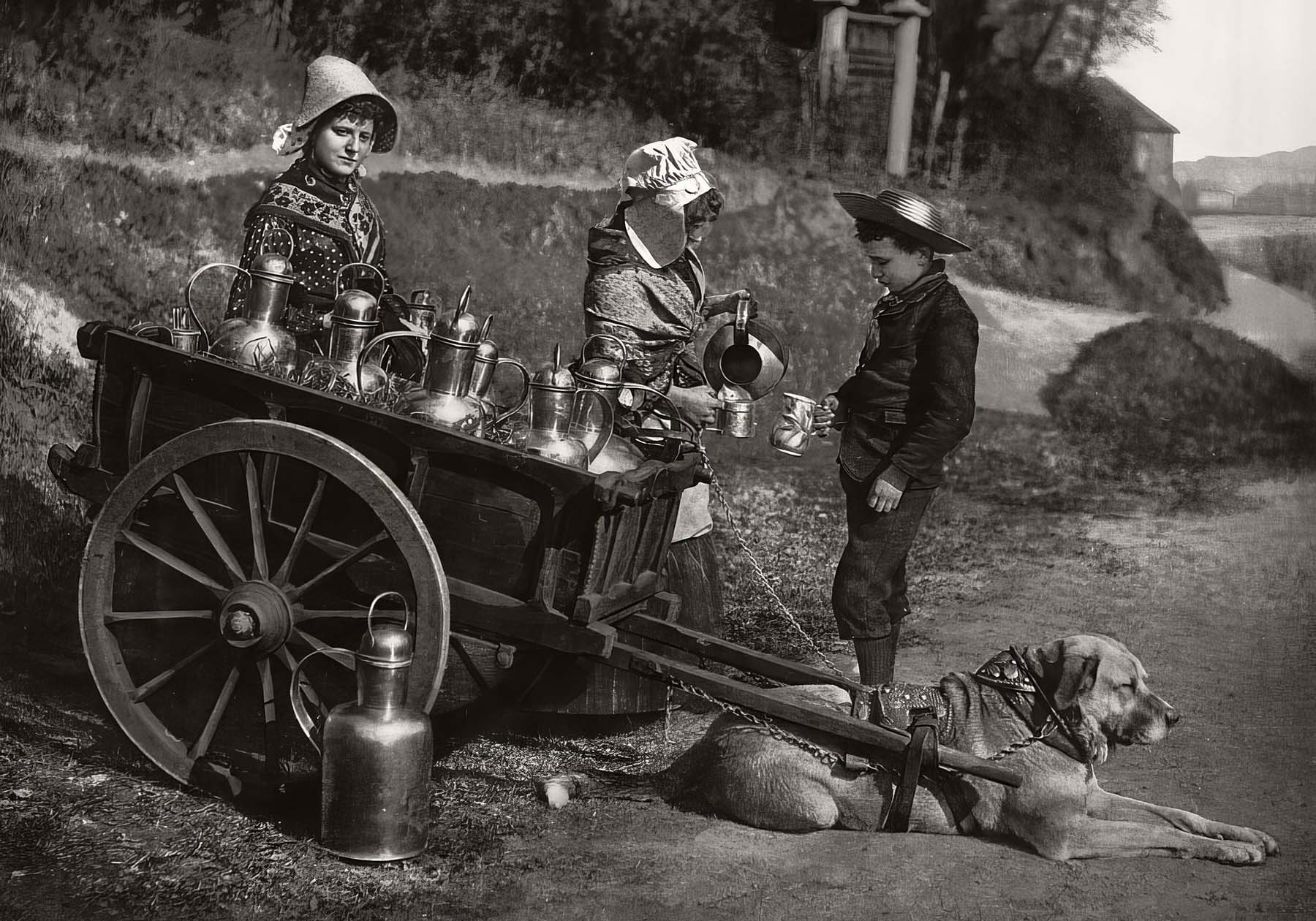
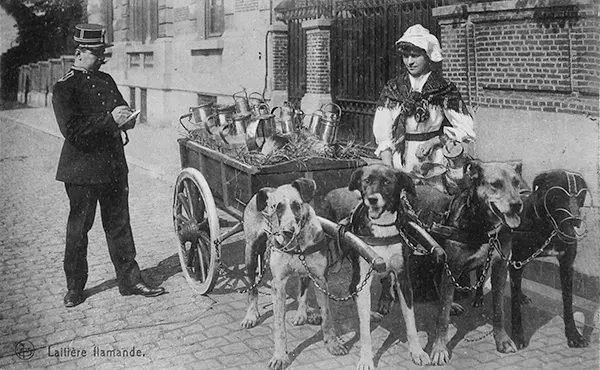
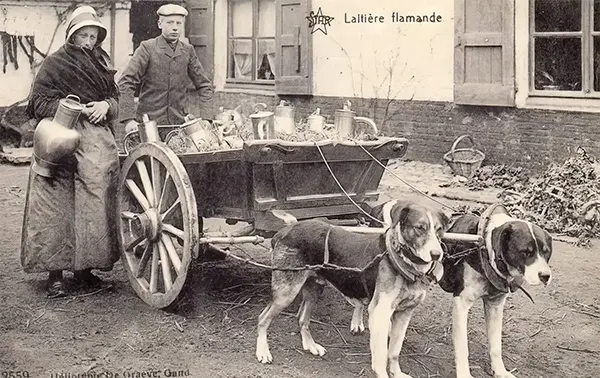
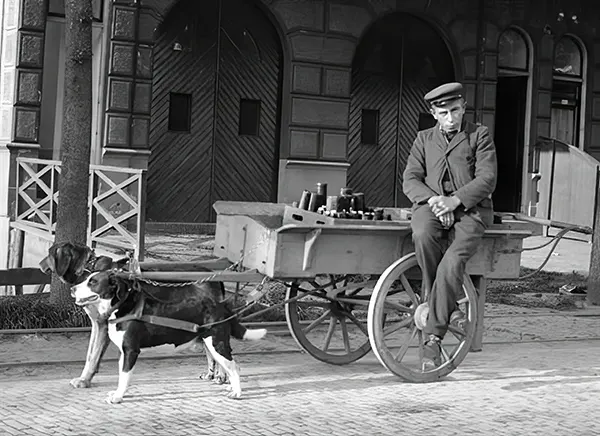

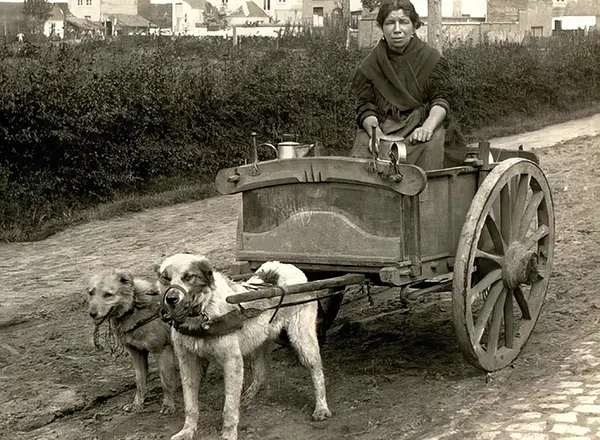
Video
Watch the heartwarming video of Mani, the friendly dog, delivering milk by cart!
Conclusion: The Legacy of Dog-Drawn Carts in Modern Times
The tradition of dog-drawn carts may be a thing of the past, but it remains a cherished memory in the hearts of many. As society continues to evolve, the simple pleasures of a slower-paced life, represented by these faithful animals, are becoming increasingly rare. Yet, through photographs and historical accounts, the legacy of the dog-drawn milk cart continues to live on. In many ways, these images serve as a reminder of how much life has changed—and how much has stayed the same in terms of our relationship with animals and the work they do for us. The dog-drawn cart may no longer roam the streets, but its charm and utility remain ingrained in the collective memory of generations.

